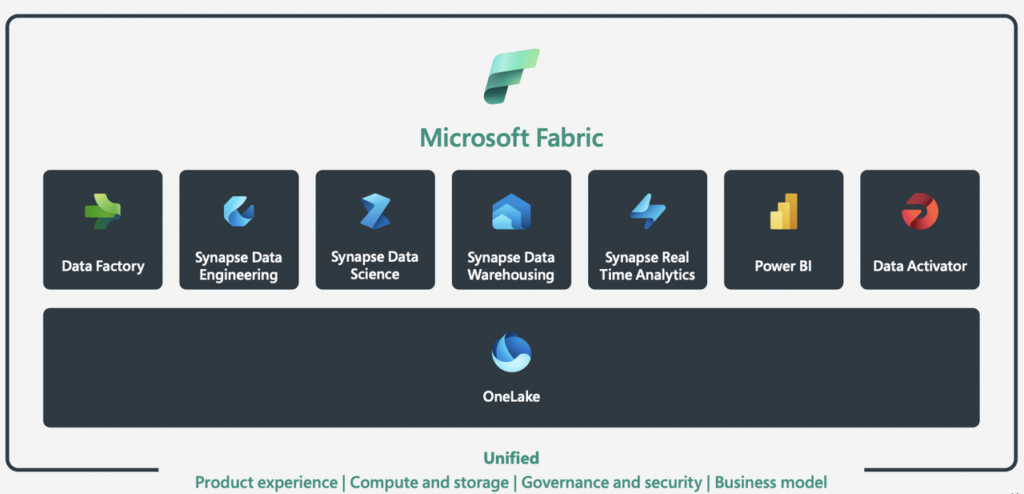
Healthcare relies on data as it shapes decisions, drives innovation, and, ultimately, enhances lives. But, as data analytics evolves, many healthcare organizations are burdened with outdated systems like Oracle or SQL Server data warehouses. These systems were once cutting-edge, but now they can’t satisfy the demands of modern healthcare use-cases. Microsoft Fabric is transforming healthcare data solutions by providing a unified, scalable platform that enables real-time analytics and seamless integration, addressing the limitations of traditional systems and paving the way for advanced, data-driven healthcare insights.
Limitations of Legacy Healthcare Analytical Systems
Healthcare and Life sciences organizations deal with diverse, PHI nature of data including patient clinical, engagement, imaging, claim and research data. Legacy systems are burdened to deal with this diverse range of structured and unstructured data for meeting the requirements of privacy, security, deidentification, compliance, performance, and scalability considerations. This is significant especially for petabyte ranges of image data. Additionally, the legacy systems are not geared towards deriving insights from cutting edge AI enabled modern solutions – mandating a new and capable solution like Microsoft Fabric that is AI and CoPilot enabled with a comprehensive ecosystem of data and analytics services and apps to build actions from insights.
The biggest challenge of data management in the healthcare industry is the data silos between providers having adopted different standards since decades ago – thus impacting patient care due to lack of sharing and interoperability.
The limitations of legacy systems having difficulties with unstructured data, a significant part of modern healthcare analytics, coupled with their dependence on costly and exclusive proprietary formats – reduce the flexibility and pose challenges to performance and scalability.
Microsoft Fabric – The Transformative Healthcare Data Solutions to Modernization
Microsoft Fabric provides a single, scalable solution that supports the complete data management and analytical workloads – without the challenges and limitations of legacy systems.
Microsoft Fabric has brought Healthcare data solutions to production ready (note: not for production use) previews at the time of writing this article. When these foundational solutions become generally available, they are anticipated to bring values that will be hard to ignore for healthcare organizations aspiring to be at the forefront of cutting-edge technology. We explore here a few scenarios that can be beneficial to such organizations to migrate from legacy analytics solutions based on on-premises or on-cloud SQL Server or Oracle solutions to Microsoft Fabric.

A modern healthcare and life science analytics system sources data from diverse sources as shown below in yet diverse standards and formats FHIR, HL7 V1/V2, SNOMED CT, CDISC, CCDA, NCPDP and of course the semi-structured and unstructured format of data.
| Clinical Data | Claims data |
| Health Record (EHR /EMR) | Genomics data |
| Imaging data (DICOM) | Prescription data |
| MedTech data (wearables, pacemakers, ultrasound, etc) | Social Determinant of Health (SDOH) |
The solution is to convert and persist the majority of the above data categories into FHIR Server. A modern data service like Azure Health Data Services can ease the process by calling in turn, the required service, e.g. MedTech Service for MedTech data.
The legacy system cannot meet the performance and scale, therefore, it’s time to move to a modern cloud-based solution to cater to intensive workloads meeting demanding, business critical use-cases. At the minimum, using Power BI for visualizing trends and finding patterns can improve patient care management, patient outreach, clinical decision support and gains in operational efficiencies.
The data and analytics solutions built on Microsoft Fabric, transforms unstructured and semi-structured data into tabular shape, persisted in data lake (OneLake), ready for high performant AI-ML-analytics workloads leveraging unified experience with autoscaling in Spark and serverless SQL pools.
With the healthcare data solutions in Microsoft Fabric, a multi-modal data estate is stood up where image support (e.g. X-rays, scans and MRIs) plays a significant role. The image pixel data and DICOM metadata when combined with clinical data – further improves diagnosis accuracy. Fabric Onelake or Azure ADLS Gen2 can be an ideal place to store the high volume of image pixel data of petabyte range.
FHIR data can be ingested into the bronze layer of the data lake and subsequently enriched in silver layer making it ready for text analytics workloads, followed by gold layer with Observational Medical Outcomes Partnership (OMOP) common data model (CDM) in open community standards for patient outreach and OMOP analytics.
Partnering for Modernization: The WinWire Edge
Using Microsoft Fabric and a collection of technical accelerators from WinWire makes the migration process more accessible, cost-effective, and time-bound.
WinWire does not just move data from one place to another. It’s about change. With tools like Migration-as-a-Service (MaaS), and specialized AI offerings such as HealthSynopsis – WinWire ensures that the modernization process is easy, affordable, and customized to the specific needs of healthcare organizations.
The first step to modernization is a comprehensive evaluation of the existing legacy systems like Oracle or SQL Server environment using WinWire’s MaaS framework combined with our Automated Ingestion & DQ accelerator. This phase is essential for identifying the specific issues and opportunities in each healthcare organization’s data scenario. Then, WinWire executes a pilot program that helps set the stage for designing a custom data platform on Microsoft Fabric to streamline data migration and enable advanced analytics workloads.
The pilot phase is where ideas meet reality. A subset of workloads with a specific usecase helps demonstrate the potential of Microsoft Fabric with unified workloads and a business model. The pilot enables enterprise rollout in scale-out manner with waves of sprints, each being two to four week’s long. This method lowers the migration risk and gives a definite plan for expanding to a complete data platform.
With WinWire, moving to Microsoft Fabric has many advantages. Organizations can save up to 30% on costs by using automation and increasing efficiency. The process gives more control over migration, with a dashboard for monitoring progress. Furthermore, switching to Microsoft Fabric enables access to various data and analytics services, such as Spark, AI-ML, and real-time analytics under a common workspace.
Closing Thoughts: Together, Impacting Tomorrow
Healthcare organizations undeniably need a data analytics solution that can grow and adapt with them. It’s an opportunity to move away from the limitations of old healthcare analytical systems and welcome a future where data drives decisions and impacts patient outcomes.
The shift from old-fashioned data warehouses to Microsoft Fabric is not only a technical change – it’s a smart decision that helps healthcare organizations become agile, flexible, and responsive. With Microsoft Fabric and WinWire’s expertise – healthcare organizations can make this journey happen quickly, unlocking the full potential of their data estate.
Initiate Your Healthcare Analytics Transformative journey in Just 4 Weeks
Dive into our rapid pilot solution and see firsthand the incredible value of a seamless migration. Modernize with Microsoft Fabric, move from SQL Server or Oracle data warehouses to unlock a new era of unified data experiences.
For more information, refer to SQL Server DW to Microsoft Fabric Migration: 4-Week Assessment and Oracle Data Warehouse to Fabric Migration: 4-Week Assessment and Microsoft Fabric Adoption: 4-Week Workshop.



